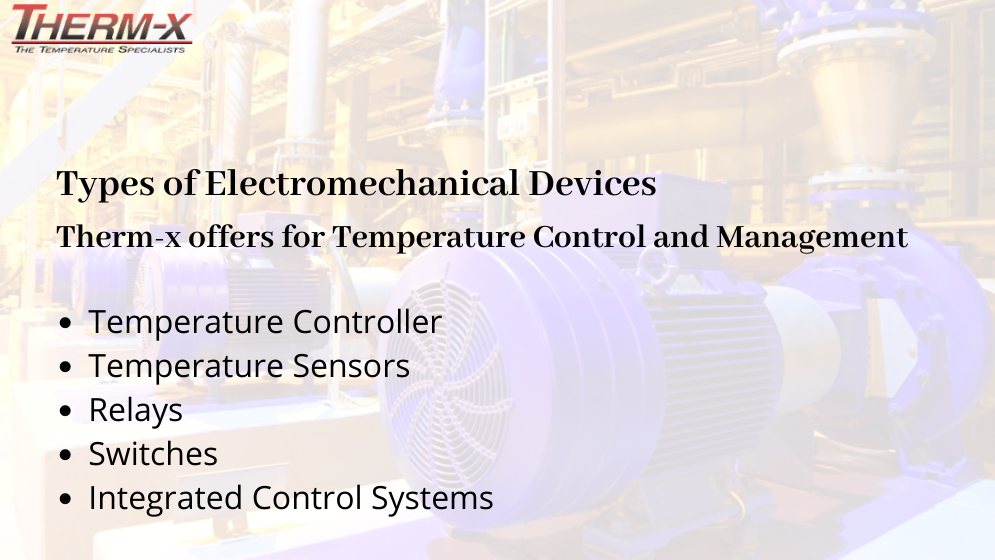Know the Capabilities of Electromechanical Devices in Temperature Control

Controlling and managing temperatures is important for running various industrial systems without any functional issues. Certain electromechanical devices such as relays, controllers, temperature sensors, and switches play an important role in some of the most basic systems such as lighting to complex ones such as industrial integrated control systems. Aside from these, there are various other devices used for temperature control in industries. There are many types and configurations of each of these devices available in the market. This post discusses the electromechanical capabilities devices in temperature control and heat management required across industries.
A Discussion on a Few Important Types of Electromechanical Devices Used in Temperature Control and Management
This is how these electromechanical products help in controlling temperatures of various systems:
- Temperature Controllers: This device does not require human intervention. It receives data from the sensor and works on an autopilot mode. Controllers are designed to work in a wide temperature range from about -10 to +60 degrees Celsius. They are handy and compact, and most of them may be wall mountable. They are equipped with alarms and LED lights, which serve as indicators. These controllers do have a robust metallic enclosure unit. Some specially designed controllers are used in environments with dust and explosive gases.
- Temperature Sensors: RTD sensor probes, thermistors, and thermocouples act as temperature sensors. RTD sensor probes are of various types such as immersive, surface mountable, bolt mountable, ones with a transition junction, and so on. Their operating temperature range is from about -50 to +450 degrees Fahrenheit. Immersive ones are made of varying immersing lengths from 1" to 4". The bolt mountable ones have long threads. RTD probes with a transition junction are mostly made of 316 stainless steel. They have a huge operating temperature range from -200 to +600 degrees Celsius.
- Relays: Electrical or electromechanical relays arrange by using a control signal to switch to a higher voltage or current level in amperes. Relays are output devices which change one type of physical quantity into another. They work as binary actuators, and are widely used in automobiles. They are used for voltage isolation and switching large quantities of current when loads rise. Normally mechanical relays can switch current up to 40 amperes, and the switching time is less than five microseconds.
- Switches: These are electrical or electromechanical devices widely used to control power in electrical circuits. They help determine if the systems cross their operational boundaries and alert the signal controllers if required. These devices can be operated manually. The manually controlled switching devices may be only used to switch on or off a system, else it may do other tasks such as controlling, speed, pressure, temperature, and so on. There are various types of switches such as pushbutton which may be operated by hand or foot, magnetic, pull chain, limit switches, and so on.
- Integrated Control Systems: These are uniquely combined and mostly automatic systems that meet all the process requirements such as temperature and pressure control, managing operational boundaries, and so on. They are complete systems equipped with alarms, switches, meters, and software. These systems are portable or surface mountable units which can be integrated with your machines and application equipment. They offer a lot of flexibility to the operating engineer in terms of thermal control and data acquisition with regards to temperature and process parameters.
If you are looking for heat and temperature control systems or products for your application, consult an expert in this field as they can guide you based on your requirements. Therm-x manufactures high-quality thermal products such as temperature sensors, controllers, and offers end-to-end solutions on temperature-related process control. The company offers high turnkey integrated process control systems to its clients. These systems are built in adherence to various industry standards.









